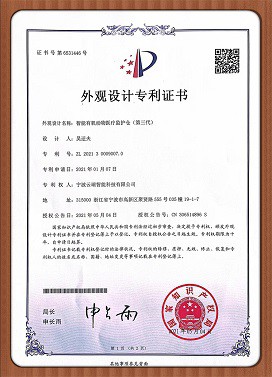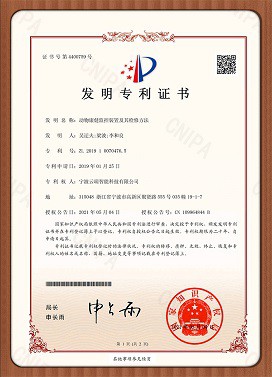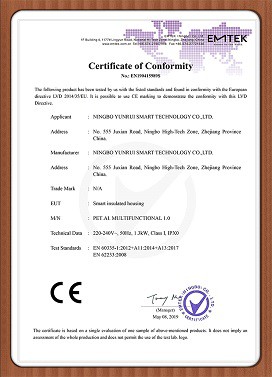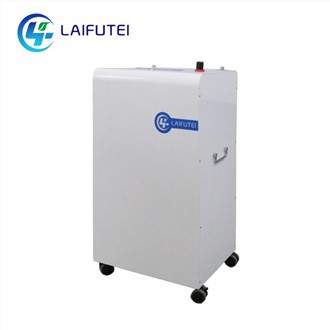
Pet Medical Oxygen Machine
A pet medical oxygen machine is a device designed to deliver concentrated oxygen to animals in need of supplemental oxygen therapy. Similar to human oxygen machines, these devices can be crucial in treating various medical conditions in pets, ranging from respiratory distress due to asthma or pneumonia to more severe emergencies such as carbon monoxide poisoning or heart failure.
Description

|
SCOPE AND PLACES OF APPLICATION
STRUCTURAL COMPOSITION
TECHNICAL SPECIFICATIONS Input voltage: AC220V~ 50Hz Rated power: 1000W Weight: 50KG Appearance size: 48CM×35.5CM×70CM Average noise: ≤60 db Maximum flow: 10~13L/min Oxygen concentration: 93 + 3% Oxygen output pressure: 30~60 KPa Compressor working pressure: ≤300KPa
WORKING ENVIRONMENT REQUIREMENTS Working temperature: 10℃-40℃ Relative humidity: ≤60%RH Atmospheric pressure: 700hPa~1060hPa
TRANSPORTATION AND STORAGE CONDITIONS Storage temperature: -20℃-55℃ Transport temperature: -20℃-55℃ Relative humidity: ≤60%RH
WORKING PRINCIPLE This machine uses 220V power supply as the power source, air as the raw material, and uses high-quality molecular sieves to prepare high-purity oxygen that meets medical standards through the pressure swing adsorption separation method (PSA method) at room temperature.
AUTO/CONTINUOUS MODE
Technical specifications |
|
|
Product Model |
YCO3 |
|
Input voltage |
AC220V~ |
|
Frequency |
50/60 Hz |
|
Rated power |
1000W |
|
Weight |
50 kg |
|
Appearance size |
48CM× 35.5CM ×70CM |
|
Average noise |
≤40 db |
|
Maximum flow |
10L/min |
|
Oxygen output concentration |
93 + 3% |
|
Oxygen pressure |
30~60 KPa |
|
Compressor working pressure |
≤300KPa |
|
Work environment requirements |
|
|
Operating temperature |
10℃-40℃ |
|
Relative humidity |
≤60%RH |
|
Atmospheric pressure |
700hPa~1060hPa |
|
Transportation and storage conditions |
|
|
Storage temperature |
-20℃-55℃ |
|
Transport temperature |
-20℃-55℃ |
|
Relative humidity |
≤60%RH |
The pet medical oxygen machine is a device designed to deliver concentrated oxygen to animals in need of supplemental oxygen therapy. Similar to human oxygen machines, these devices can be crucial in treating various medical conditions in pets, ranging from respiratory distress due to asthma or pneumonia to more severe emergencies such as carbon monoxide poisoning or heart failure.
Immediate Relief
One of the main advantages of pet medical oxygen machine is that it provides immediate relief to pets who are struggling to breathe. Whether your pet has asthma, pneumonia, or another respiratory condition, an oxygen concentrator can help them breathe easier and more comfortably.
life-saving
In some cases, oxygen therapy can save the life of pets suffering from severe respiratory distress. By providing a higher concentration of oxygen, an oxygen concentrator can help prevent further damage to your pet's lungs and improve their overall health.
Portable
Many pet oxygen concentrators are designed to be portable, making them easy to transport and use wherever your pet needs them. This means you can take the machine with you when traveling or to the vet's office, ensuring your pet always gets the oxygen it needs.
High Cost Performance
Oxygen therapy is often more cost-effective than other respiratory disease treatments or medications. While the initial investment in an oxygen concentrator may be high, the ongoing costs are relatively low, making it a practical option for many pet owners.
Easy To Use
Most pet oxygen machines are designed to be user-friendly, with simple controls and instructions. This allows pet owners to easily administer oxygen therapy at home, even if they have no previous experience with medical equipment.
Customizable
Many pet oxygen concentrators allow you to adjust the flow and concentration of oxygen, making it easy to tailor treatment to your pet's specific needs. This customization ensures your pet receives optimal oxygen levels, increasing the effectiveness of the treatment.
Why Choose Us
Competitive Prices
We offer our products at competitive prices, making them affordable for our customers. We believe that high-quality products should not come at a premium, and we strive to make our products accessible to all.
Efficient And Convenient
The company has established marketing networks around the world to provide high-quality services to customers in an efficient and convenient manner.
Advanced equipment
We take great measures to ensure that we work with the industry's highest quality equipment and that our equipment is regularly and meticulously maintained.
High quality products
We always put customer needs and expectations in the first place, refine on, continuous improvement, to seek every opportunity to do better, to provide customers with their expectations of quality products, to provide customers with the most satisfactory service at anytime.
Rich Experience
Has a long-standing reputation in the industry, which makes it stand out from its competitors. With over many years of experience, they have developed the skills necessary to meet their clients' needs.
Professional team
We have a team of skilled and experienced professionals who are well-versed in the latest technology and industry standards. Our team is dedicated to ensuring that our customers get the best service and support possible.
Types of Pet Medical Oxygen Machine
Portable Oxygen Machine
Portable oxygen machine is small in size, easy to carry, and can be used anytime and anywhere. It is suitable for pets with mild hypoxia symptoms or pets that need to be supplemented with oxygen during travel.
Desktop Oxygen Machine
Desktop oxygen machine is larger in size and needs to be placed on a desktop or other flat surface. It has a larger oxygen output and is suitable for pets with severe hypoxia symptoms or pets that need long-term oxygen supplementation.
Wall-mounted Oxygen Machine
Wall-mounted oxygen machine is installed on the wall and has a larger oxygen output. It is suitable for pets in hospitals or pets that need long-term oxygen supplementation at home.
Oxygen Concentrator
Oxygen concentrator is a device that separates oxygen from air and provides high-purity oxygen. It is suitable for pets with severe hypoxia symptoms or pets that need high-purity oxygen supplementation.
Pressure Swing Adsorption (PSA)
This is the most common method used in pet oxygen concentrators and is based on the principle of selective adsorption of gases under pressure. The ambient air is compressed and passed through a molecular sieve bed, which preferentially adsorbs nitrogen and allows oxygen to pass through. After a certain period, the pressure is reduced, and the nitrogen is desorbed, allowing the sieve bed to be regenerated and ready for the next cycle.
Liquid Oxygen
Liquid oxygen systems store oxygen in a liquid state at very low temperatures. The oxygen is vaporized as needed and can provide a high flow rate of oxygen for pets that require substantial amounts of oxygen or have severe respiratory distress. Liquid oxygen systems are typically larger and more expensive than concentrators and require periodic refilling.


Cylinder Oxygen
Compressed oxygen in cylinders is another source of oxygen for pets. These cylinders come in various sizes and pressures, offering a portable and immediate supply of oxygen. However, like liquid oxygen systems, they require regular replacement or refilling once the oxygen is depleted.
Chemical Oxygen Generators
These devices produce oxygen through a chemical reaction. They are typically used in emergency situations or where electricity is not available since they do not require power to operate. Chemical oxygen generators are not as common for continuous use in pet medical care due to their limited capacity and the need for regular replacement of the chemical agent.
Electrolytic Oxygen Generation
This method uses electricity to split water molecules into hydrogen and oxygen gases through electrolysis. The oxygen is then collected and supplied to the pet. Electrolytic oxygen generators are not commonly used in portable medical oxygen systems due to their size, complexity, and the amount of electricity required to produce oxygen.
Application of Pet Medical Oxygen Machine
Respiratory Distress and Difficulty
Pet medical oxygen machines are commonly used in cases of respiratory distress and difficulty. This may include conditions such as bronchitis, asthma, pneumonia, or any other respiratory condition that makes it difficult for pets to breathe normally. By providing supplemental oxygen, these machines can help alleviate symptoms, improve oxygen saturation levels, and support the pet's respiratory system.
Cardiac Arrest and Heart Failure
In cases of cardiac arrest or heart failure, pets may require immediate oxygen support to maintain vital organ function. Pet medical oxygen machines can quickly provide high concentrations of oxygen to support the pet's circulatory system and maintain oxygen delivery to critical organs.
Anesthesia Recovery
During anesthesia recovery, pets may require supplemental oxygen to help them recover from the effects of the anesthesia. Medical oxygen machines can provide a controlled flow of oxygen to support the pet's respiratory system and ensure a smooth recovery process.
Wound Healing and Surgical Procedures
Oxygen is essential for wound healing and surgical procedures. Pet medical oxygen machines can provide the necessary oxygen levels to support wound healing, reduce the risk of infection, and promote faster recovery from surgical procedures.
Oxygen Therapy for Chronic Conditions
Certain chronic conditions, such as chronic obstructive pulmonary disease (COPD) or congestive heart failure, may require long-term oxygen therapy. Pet medical oxygen machines can provide a continuous supply of oxygen at home, allowing pets to maintain normal activities and quality of life while managing their condition.
Emergency Response
In emergency situations, such as a fire or accident, pets may be exposed to smoke or other harmful gases. Pet medical oxygen machines can provide immediate oxygen support to pets in need, stabilizing them until they can receive further medical attention.

How Does a Pet Oxygen Machine Work
The machine draws in ambient air through the inlet filter. This initial step ensures that the air entering the system is free of dust and other particles that could damage internal components or contaminate the oxygen supply.The air is then compressed using a motor-driven piston or rotary compressor. Compressing air increases its pressure, making it easier to manipulate oxygen and separate it from other gases. The compressed air passes through a pre-filter before reaching the sieve bed to remove residual impurities and moisture. This helps protect the molecular sieve and maintain the efficiency of the oxygen production process.
The core of the oxygen generator is the molecular sieve bed. The bed is filled with a zeolite-based material that has a high affinity for nitrogen. As compressed air passes through the sieve bed, nitrogen molecules stick to the surface of the zeolite crystals, while oxygen molecules are smaller and can pass through relatively unimpeded. After the nitrogen is adsorbed, the remaining air is rich in oxygen. This concentrated oxygen is supplied to pets through a delivery system. Adjusting the oxygen produced at high pressure to a lower, safer level suitable for inhalation. This is accomplished through the use of a pressure regulator, which controls the flow and pressure of oxygen as it leaves the machine.
Regulated oxygen is delivered to your pet through tubing connected to a mask, cannula, or oxygen cage. Flow rates can often be adjusted based on the pet's needs, which are determined by factors such as size, weight, and severity of disease. The adsorbed nitrogen is periodically released from the sieve bed through a process called desorption, which occurs when system pressure decreases. This regenerates the sieve bed so that it can continue to adsorb nitrogen and produce oxygen. Most oxygen concentrators are designed to operate continuously, cycling through compression, adsorption, and desorption processes to maintain a steady flow of oxygen for your pet.
Components of Pet Medical Oxygen Machine
The compressor is a vital component of the oxygen machine. It pumps air into the system, providing the necessary airflow for oxygen generation. The compressor is usually electric-powered and runs continuously to maintain a steady supply of air. The molecular sieve or sieve bed is where the air separation process occurs. This component contains a special material that attracts and removes nitrogen from the air, leaving only oxygen. The sieve bed is usually made of a porous material that allows air to pass through but traps the nitrogen molecules.
Once the oxygen is separated from the air, it is compressed and stored in an oxygen storage tank. This tank holds the oxygen under pressure, ready for delivery to the pet. The size of the tank determines the amount of oxygen it can hold and thus the duration of oxygen therapy before refilling is needed. The oxygen delivery system is responsible for delivering the oxygen to the pet. It typically includes a regulator that controls the flow rate of oxygen, ensuring a consistent and appropriate amount is delivered. The oxygen is then conveyed to the pet through a nasal cannula, mask, or tracheostomy tube, depending on the pet's condition and preference.
Modern pet medical oxygen machines often feature a monitoring and control unit. This unit displays important parameters such as oxygen concentration, flow rate, and tank pressure. It may also have alarm systems that sound if the oxygen levels drop below a certain threshold, alerting the user to take necessary action. The power supply is essential for the operation of the oxygen machine. It can be either an electrical outlet or a battery, depending on the model. Some machines offer dual power options, allowing them to be used both at home and when traveling.
To protect the oxygen machine and ensure clean oxygen delivery, filters and filter elements are often installed. These filters remove dust, dirt, and other contaminants from the air before it enters the system. Regular cleaning and replacement of filters are crucial to maintain the purity and quality of the oxygen. For portability, many pet medical oxygen machines come with a carrying case or bag. This protective casing allows users to easily transport the machine when traveling or going to different locations with their pets.
How Often Should Pet Medical Oxygen Concentrators Be Inspected and Maintained
It is recommended to inspect the pet medical oxygen concentrator at least once a week. During the inspection, check whether the device is functioning properly, whether there are any abnormal noises or smells, and whether the power cord and hose are intact.The filter of the pet medical oxygen concentrator should be replaced regularly according to the manufacturer's instructions. Usually, the filter needs to be replaced every 3 to 6 months to ensure the quality and purity of oxygen.The pet medical oxygen concentrator should be cleaned regularly to remove dust and dirt. Use a soft cloth or brush to clean the outside of the device, and use a special cleaning solution to clean the filter and hose. The oxygen concentration and flow rate of the pet medical oxygen concentrator should be calibrated regularly to ensure the accuracy of the device. Calibration can usually be done by a professional or by following the manufacturer's instructions. When not in use, the pet medical oxygen concentrator should be stored in a dry, cool and dust-free place to avoid damage to the device.
Understanding The Equipment
Training begins with a thorough understanding of the pet medical oxygen machine itself. This includes understanding its components, how it works, and its various settings and functions. Operators should be familiar with the different parts of the machine, such as the oxygen source, flowmeter, hoses, and masks or cannulas.
Knowledge Of Oxygen Administration
To operate a pet medical oxygen machine, one must understand the principles of oxygen administration. This includes knowing the appropriate oxygen flow rate and concentration required for different pet sizes and conditions. Understanding how to assess a pet's oxygen needs and adjusting the settings accordingly is crucial.
Safety Precautions
Safety is paramount when operating a pet oxygen machine. Operators must learn about safety procedures and precautions to avoid mishaps or harm to the pet or themselves. This includes proper equipment maintenance, knowing how to detect and respond to oxygen leaks or malfunctions, and ensuring a sterile environment during oxygen administration.
Pet Handling And Restraint
Operating a pet oxygen machine often involves working closely with and handling distressed or recovering animals. Training should encompass proper pet handling techniques, including methods to safely restrain or calm pets during oxygen administration. This ensures both the operator's safety and the comfort of the animal.
Medical Guidelines And Protocols
Operators of pet medical oxygen machines need to be familiar with medical guidelines and protocols for oxygen therapy. This may involve learning about different respiratory conditions, symptoms, and the appropriate use of oxygen therapy in different scenarios. Understanding common pet medical emergencies and the role of oxygen therapy in treating them is essential.
Communication And Teamwork
In situations where pet oxygen machines are used, effective communication and teamwork are crucial. Operators should learn how to coordinate with veterinary professionals, including veterinarians and veterinary technicians, to ensure the timely and appropriate administration of oxygen therapy. Clear and concise communication is essential to relay vital information about the pet's condition and response to treatment.
Continuous Education
Given the advancements in pet medical treatments, continuous education and updates are vital for operators of pet oxygen machines. Staying informed about new developments, guidelines, and best practices in oxygen therapy ensures maintaining a high standard of care for pets in need.
What Are the Dimensions and Weight of a Pet Medical Oxygen Machine
In terms of dimensions, a typical pet medical oxygen machine may measure around 12 to 18 inches in length, 8 to 12 inches in width, and 10 to 15 inches in height. This compact size allows veterinary professionals to easily transport the machine wherever it is needed, whether it's to an examination room or an emergency situation. Additionally, these dimensions make it convenient for pet owners to keep the machine at home while their pets recover from an illness or injury.
When it comes to weight, a pet medical oxygen machine is typically lightweight. They generally weigh between 10 to 20 pounds, allowing for ease of movement and handling. This weight range ensures that veterinary professionals can swiftly respond to emergencies and deliver immediate oxygen therapy without being hindered by heavy equipment.
The dimensions and weight of a pet medical oxygen machine are designed to prioritize ease of use and portability. With dimensions ranging from 12 to 18 inches in length, 8 to 12 inches in width, and 10 to 15 inches in height, these machines are compact and versatile. Additionally, their lightweight nature, usually between 10 to 20 pounds, allows for convenient movement and quick response in critical situations. It is through the proper understanding and consideration of these dimensions and weight that we can provide optimal medical care to our precious animal companions.
How Do I Choose the Right Pet Medical Oxygen Machine for My Pet
Different pet species and sizes may have different oxygen requirements. Make sure to choose an oxygen machine that is suitable for your pet's species and size. Some oxygen machines are specifically designed for dogs, cats, or other small animals. The oxygen flow rate is an important consideration. The flow rate determines how much oxygen your pet receives per minute. Consult your veterinarian to determine the appropriate oxygen flow rate for your pet's condition. The oxygen concentration delivered by the machine is also crucial. Most pet medical oxygen machines provide oxygen at a concentration of between 85% and 95%. Ensure that the oxygen machine you choose delivers the appropriate concentration for your pet's needs. Consider whether the oxygen machine is portable and easy to move. If you need to take your pet on trips or to the veterinarian, a portable oxygen machine would be more convenient. Some pets may be sensitive to noise. Choose an oxygen machine that operates quietly to minimize stress and discomfort for your pet. Look for oxygen machines with safety features such as overcurrent protection, low oxygen alarm, and anti-tip design to ensure the safety of your pet and users. Research the brand reputation and read customer reviews of the oxygen machine you are considering. Look for positive feedback and reliability to make an informed decision. Consult your veterinarian or a pet healthcare professional for personalized advice and recommendations based on your pet's specific condition and needs.
Our Factory
Ningbo Light Medical Technology Co., Ltd. Is a collection of research and development, production and sales for the integration of high and new tech enterprise. Proceeding from clinical requirements in veterinary medical industry, it is committed to developing exclusive devices in the field of intelligent veterinary medical care. Wu Yufu, as the founder of the company, is the national registered veterinarian with nearly 20 years of animal clinical experience.

Certifications






FAQ
Q: How do I know if my pet needs oxygen therapy?
Q: How long will my pet need to use an oxygen machine?
Q: Can I purchase a pet oxygen machine without a prescription?
Q: Can I use an oxygen machine for both cats and dogs?
Q: What is the difference between a continuous flow oxygen machine and a pulsed dose oxygen machine?
Q: Can I use a pet oxygen machine for my bird?
Q: How do I store my pet oxygen machine when not in use?
Q: Can I use a humidifier with a pet oxygen machine?
Q: What is the ideal flow rate for a pet oxygen machine?
Q: Can I use essential oils or scented candles near a pet oxygen machine?
Q: How do I dispose of used oxygen tanks or cylinders?
Q: How does a pet oxygen machine work?
Q: Why would my pet need oxygen therapy?
Q: Can I use a human oxygen concentrator for my pet?
Q: Are there different types of pet oxygen machines?
Q: How do I choose the right pet oxygen machine?
Q: How much does a pet oxygen machine cost?
Q: How do I maintain a pet oxygen machine?
Q: Can I refill oxygen cylinders myself?
Q: Is it safe to leave my pet unattended with an oxygen machine?
Hot Tags: pet medical oxygen machine, China pet medical oxygen machine manufacturers, suppliers, factory, portable hamster cage, soft puppy crate, 100cm hamster cage, large dog cage, cleaning dogs teeth at vet, small rabbit cage
Send Inquiry
You Might Also Like












